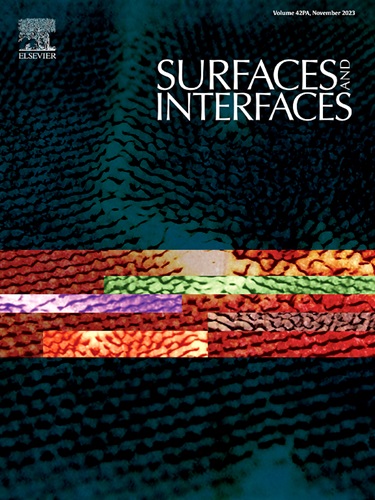Carbon-interfaced nanostructure phase-change memory with capping layer: A strategy for low-thickness variation and reliability
IF 5.7
2区 材料科学
Q2 CHEMISTRY, PHYSICAL
引用次数: 0
Abstract
In order to overcome the challenges existed in traditional phase change materials and devices in terms of thickness variation, heat dissipation, operating speed and resistance fluctuation, this work introduces a novel phase change device with a thickness of 20 nm C/Sb2Te (C/ST) heterostructure active region and adding a Ge2Sb2Te5 (GST) capping layer (CL) to achieve high performance. The thickness change rate of the proposed [C/ST]2+CL is only 0.2 %, the device operating speed is as fast as 5 ns, and the cycle endurance is up to about 8×105 with high resistance ratio and good stability. The power consumption and resistance drift largely decrease to 10 pJ and 0.04, respectively. The Ab initio molecular dynamics (AIMD) simulations show that the C atoms in the amorphous C layer mainly exist in a network form of C rings and C chains. The C layer serves as a confinement medium that limits atomic diffusion, stabilizes the amorphous phase, and mitigates resistance drift, thereby enhancing thermal stability and reducing power consumption. Additionally, the GST CL effectively suppresses elemental segregation, further improving the endurance and reliability of PCRAM devices. This work provides a promising approach for material design and performance optimization for phase-change random access memories.

求助全文
约1分钟内获得全文
求助全文
来源期刊

Surfaces and Interfaces
Chemistry-General Chemistry
CiteScore
8.50
自引率
6.50%
发文量
753
审稿时长
35 days
期刊介绍:
The aim of the journal is to provide a respectful outlet for ''sound science'' papers in all research areas on surfaces and interfaces. We define sound science papers as papers that describe new and well-executed research, but that do not necessarily provide brand new insights or are merely a description of research results.
Surfaces and Interfaces publishes research papers in all fields of surface science which may not always find the right home on first submission to our Elsevier sister journals (Applied Surface, Surface and Coatings Technology, Thin Solid Films)
 求助内容:
求助内容: 应助结果提醒方式:
应助结果提醒方式:


